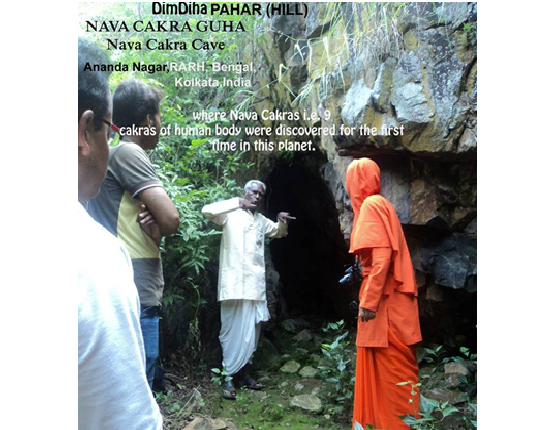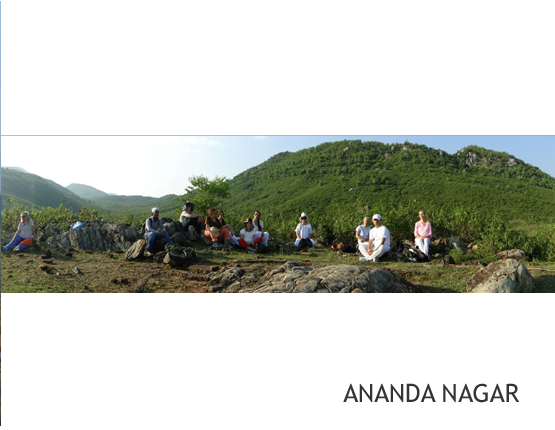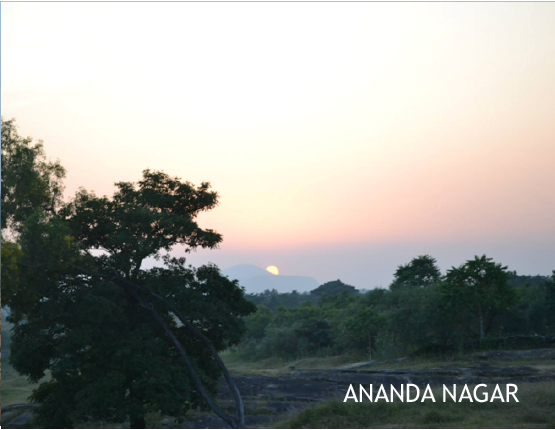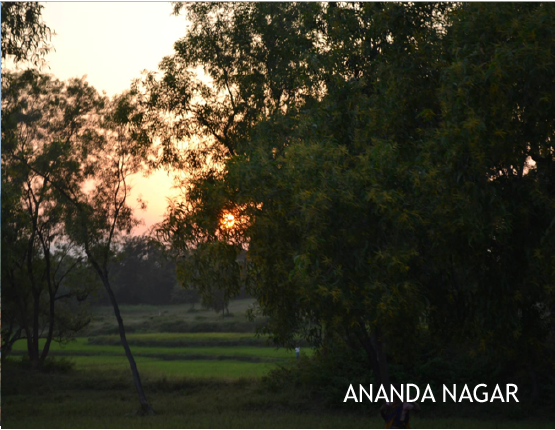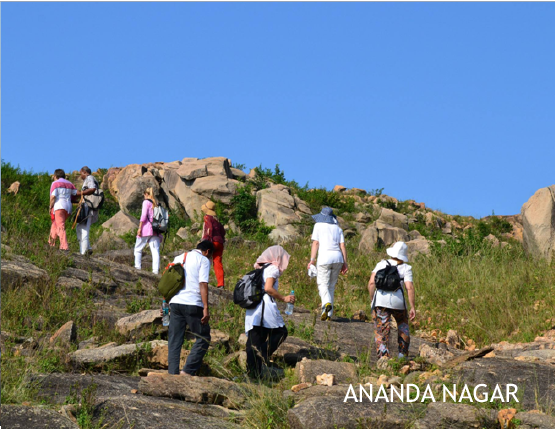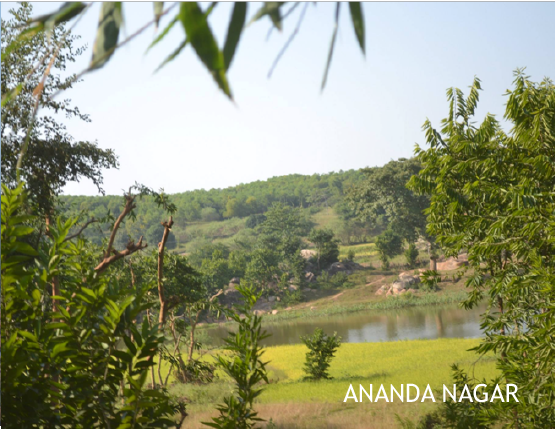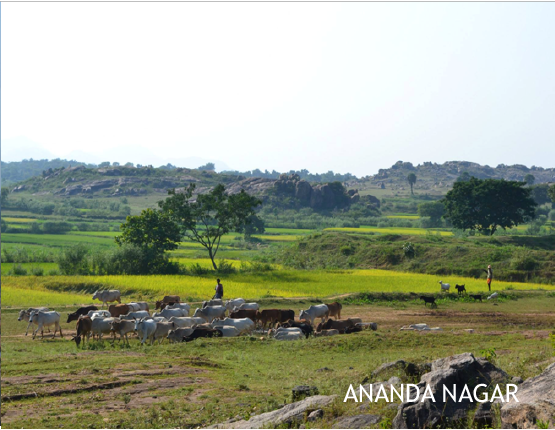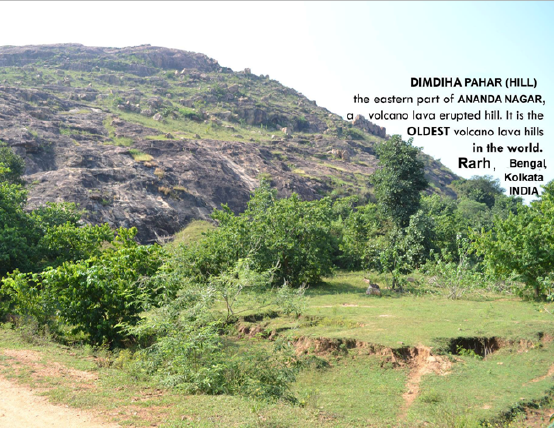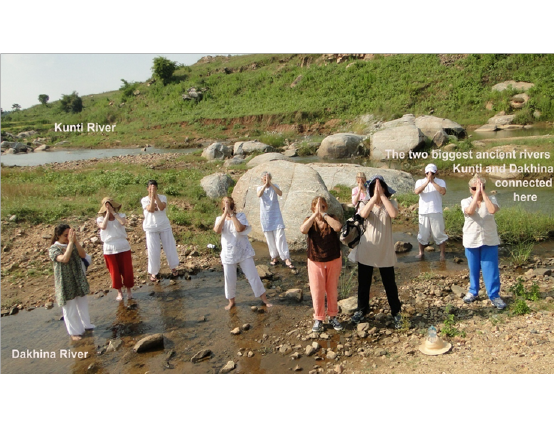“Ananda Nagar is the nucleus of this expressed universe. Ánanda Nagar is not merely our physical Ananda Nagar, but it is the Ánanda Nagar of our life. We have to build it in all respects. We will have to take all possible steps so that Ánanda Nagar can develop quickly and show light to the entire universe. The question is, why should it be done so urgently? The reason is that human beings do not do survive on physical objects alone. Humans also possess something which is known as their innate property i.e. pra’na’ dharma. Even though human beings may be provided with food, clothes and shelter, they still die; they die in the absence of pra’na’ dharma or they die an unnatural death. Ánanda Nagar will provide us with an ancient eternal vital force. This is why we will have to nourish it in all respects, and it brooks no further delay. Delaying means to hamper the cultural growth of the entire human society. We will not allow this to happen. So, we are determined to build Ánanda Nagar in all possible ways.
Ánanda Nagar has its own special glory and that glory has culminated as a result of the collective sacrifice of a large number of spiritual aspirants. Through intuitional practice, service, sacrifice and culture, let Ánanda Nagar show the way to the entire universe. This is what we should expect of Ánanda Nagar. This is why we should build Ánanda Nagar in all respects and show light to the entire humanity. This is what I really want. After a long time, we are all back here again and meet each other, what could be more delightful than this! When I came to Ánanda Nagar this time I was overwhelmed with joy. When I looked at your faces I felt so much joy within that it was difficult for me to restrain my emotions. I felt overjoyed, and I think you also felt likewise because we are able to meet here again after all these years. What could be more wonderful than this!
Every object has a medium, a vehicle. Let Ánanda Nagar be the medium for our cultural progress. Let us build Ánanda Nagar and its surrounding villages in all ways, economically, socially and culturally. A certain work may be difficult for a single person, but it is easier for many. What is a heavy bundle for one person is easy if each person in the group carries one stick; when any action is undertaken by a group of people it no longer remains a difficult task. Similarly, if we work together to build Ánanda Nagar as a spiritual nucleus it will not be a difficult proposition. Let us dedicate ourselves to that glorious task from this very moment.”
Shrii Shrii Ánandamúrti, Ánanda Nagar, 20th October, 1979.
“There was a great ocean, its surface agitated by rows of towering waves, an ocean which had neither name nor gotra (clan) origin. Who was there to name it, who was there to tell others about it? No one, because human beings had not yet come on earth. This was around 300 million years ago. (And as regards the land mass,) there was no name yet on earth for that and, mountainous terrain, nor even yet a simple grove of trees to which a name could be given. After a long time this very terrain, this nameless mountainous terrain, was given the name Rárh. The northern part of the Arabian Sea did not exist either, what existed was its southern part, which linked the Deccan peninsula with Africa, the Andaman’s, Malaysia , Indonesia and Australia. They were linked by (land) that lay sometimes a little above the water level, sometimes a little below. In that world inhabited by human beings, the Rarh of those days was older than any other land. The Himalayas were born many crores of years after the birth of Rarh. If human beings appeared a million years ago, then those inhabitants of the western Rarh of a million years ago found eastern Rarh to have been in a ready condition for them even before their birth.
Human beings originated at a few particular points on this planet. Even without getting into a detailed discussion as to which humans appeared first and which appeared later, I can say that the origin of the human race in Rarh is very ancient. No trace can be found of any more ancient human habitation. When forests appeared on earth, dense forests spread over the hard (granite), rock , the metamorphic rock, the igneous rock and the sedimentary rock of Rarh. This very forest of that time provided the vital nectar for Rarh as a human habitation. This very forest reined in the rivers of Rarh. Again, it was this forest, after the erosion of the snow -covered mountains, that invited rain clouds to Rarh. And the rain god conferred his abundant and inexhaustible blessings on Rarh . This is our land of Rarh, a living onlooker to many a cycles of creation, preservation and destruction, a mute witness to a host of changes.
Countless were the wild creatures in the forests of Rarh. Human beings appeared on the soil of Rarh after the ice age had retreated from its heart. The enormous animals were gradually becoming smaller. The mammoths (Aerávatas in Sanskrit) had been frozen in ice and fossilized, leaving behind the elephants and their descendants. The age of gigantic dinosaurs, guntosauris and kaktesiyás was over, and other kinds of large animals took their place. The forest dwellers of Rarh, clad in leaves, bark and animal skins, lived by hunting. The human beings of may today may disregard them, but those people were the epitome of simplicity, they were the representatives of the undulating soil and the thunderous reverberation Rarh, the underdeveloped humans of that time who were the revered ancestors of the people today, and the dust of whose feet we touch to our head as we march ahead.
Afterwards, those people learned how to tend animals, and slowly learned a little agriculture. A fire of self expression stirred their hearts. This was many thousands of years ago. Surely, they did practice tapasya (suffering or austerity for the attainment of a certain goal). But what was it for ? How did they do it? Who taught them? No one but the Lord of their Inner World, the Supreme Master of their life, taught – “‘Scarch, search, someone is there – someone is coming -someone will give you what you need to journey forward, and help you properly direct your efforts to reach the target. ” This was their nameless, silent tapasiyá. When the Aryans started coming into India, at a time when some had already come, and some were about to start from the barren and arid lands of Central Asia Lord Sada Shiva, that great personality, the life and soul of everyone, was born. The people of Rarh came in touch with His eternal gospel and His infallible guidance and received the much – desired touch of the enlivening wand of their Abhiista (desideratum in the spiritual sphere). Thus Rarh became the cradle of civilization.
Rarh was NOT ONLY the starting- point of civilization. Rarh represented the FIRST-EVER steps towards cultural progress. The intermingling of the basins of small and big rivers, and the exchange of activities and ideas, laid the foundation for the civilization and the culture of Rarh, whose splendour in turn ushered in a golden dawn not only in Rarh, but also in the life of all the underdeveloped humanity of that Dark Age.”.. Shrii Shrii Anandamurti.
People of many lands started converging on Rarh to hear the paincajjanya, the clarion call, of humanity, and to join in singing the paean of humanity. China called Rarh by the name of “Lati”, Greece called it “Gaunga Rridi” and the Aryans called it “Rattha.”This civilization and culture of Rarh were not confined to Rarh alone they could not be confined, and it would have been wrong to confine them. They sailed by sea from its port of Tamralipta ( modern Tamlik), responding to the call of its far-off nameless and unknown friends.
As Shriiharsa is one of the ancient scripts of India, Sanskrit has been written in this script since ancient times, and most ancient books in Sanskrit were written in this script. The Devanagari script came much later. The deed of gift written in the Sanskrit language by King Chandra Varma of Shushunia Hill, Rarh, was written in Shriiharsa script, and that Shushuniya script is the most ancient example of Belgali script (1100 years oil) Some think that Devanagari is the script of Sanskrit , but this is totally wrong. Sanskrit has no script of its own. The Shriiharsa script is much older than Devengari, and it facilitates Swift writing (as one can write for a long time without raising one’s hand.)
Just as the people of Rarh engaged themselves in philosophical exercises on the one hand, in a lighter mood, they ever vivacious, with laughter, amusements, dance, song, wit and humour. The People of Rarh are sociable and prefer to remain in company and in a pleasant mood. Though burdened with poverty, they invite people for meals. They serve what they themselves eat – rice, black gram( biri in Rarhii Bengali ) and curry of bari-posta (dumplings made of palse, flavored with poppy seeds) and pumpkin (‘pumpkin’ is dimla in Rarhii Bengali). They do not feel shy to speak the correct thing in a clear way.
THE CLIMATE OF RARH:
“The air of Rarh is clear and the climate is conducive to good health. The clear air blowing across Western Rarh can hardly be found anywhere else. And its water is equally good. Adequately rich in minerals, it is , as it were, nectar (Sudha). Today the heavy load of exploitation is breaking the backs of the people of Rarh. To save Rarh without delay, an all round socio-economic rehabilitation plan is needed. Rarh is filled with nature’s inexhaustible store, and yet the people of Rarh are not able to eat their fill of nutritious food. What a heart-rending sight! It may not be possible for the present inhabitants of Rarh alone to do all that is necessary to save their land from this miserable plight. So those from outside Rarh must also come forward to help Rarh, otherwise a highly- civilized and cultured human population will be ruined. Rarh appears emaciated from starvation, miserably struck by misfortune, and chained with slumber because of the lack of proper consciousness regarding the need of the hour. Let all rational people of the world think collectively about Rarh ‘s distress, and let them come forward with their help to build up Rarh. Rarh is the starting point of human civilization, Rarh is the hub of human culture. Let this Rarh shine again in its own glory. Let that Rarh again brim over with fruits, flowers, treasures, humanity and spirituality. Let the shroud of mist that obscuring Rarh’s path of progress blow away, let Rarh’s melancholy face brighten with a smile. With these good wishes, let me conclude.”…………..
Shrii Shrii Anandamurti, 26/11/1981, kolkata.
TANTRA Y RARH:
In a greater sense we can say that the culture of Rarh means the culture of Bengal. So the parts of Rarh which fall in Bihar and Orissa culturally are also within the scope of Bengal. The mother tongue of the aforesaid areas in Bengali. Rarh also contributed a lot of Bengali literature in different ages. Not only the language, the culture of Rarh and the culture of Bengal is the same. In ancient history often Rarh and Bengal have been mentioned together. It was called Rarh- Banga. So when we say that the culture of Rarh has received a tremendous force of Tantra, the same can be said of Bengal also. There is a Shloka in a Tantric scripture:
“Bange prakashita vidya
Maethilye pravaliikrta
Kvacit kvacit Maharasstre
Gurjjare pralayungata”
Understanding this Shloka we can see that this vidya, i.e. Tantra was originally established in Bengal or.in Rarh
At one time Jainism and Buddhism flourished in Rarh to a great extent. We also know that the Tantra of Shiva was the dharma of the people of Rarh. The people of Rarh accepted Jainism and Buddhism externally, but internally all of them were the disciples of Lord Shiva. So when they came in the touch of Jainism and Buddhism, they established Jain Tantra and Buddha Tantra, because they could not deny the overwhelming greatness of Lord Shiva. In the research work of Rarh , it was found Shiva liungas in every abandoned.in Jain center. After the decline of these two cults, from Rarh, the people of Rarh accepted Navya Hindu Dharma of Shaunkaracarya,.But still they did not give up Shiva. In every village one can see temples of Shiva. In Rarh many religions came and went, but the greatness of Shiva remains above all isms. It is the special characteristic of Rarh Tantra gave the birth of Ba’ul cult, and from which the mysticism got shaped.
There are eight astonished places in the Rarh.
1) Belamu Pahar, the oldest mountain in the planet.
2) DimDiha Pahar, sign of the most ancient Tantra meditation.
3) DimDiha Pahar, the oldest dead volcano in the world.
4) Pati Jhalda Gram, the birth place of Kapil Muni, the first philosopher in the planet.
5) Ananda Nagar, the starting point of human’s physical, mental and spiritual progress.
6) Deul Ghata, the first temple in the planet.
7) Shol Pahar, Bij Buj, the starting place of the oldest river Kamsavatii of the world.
8) Asthi Pahar, the oldest dinosaur fossil.
Ananda Nagar is the nucleus of the entire RARH and RARH was the starting point of civilization.




